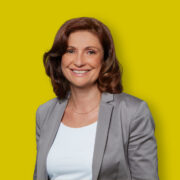Journaling or putting our thoughts in writing have many benefits, not only on our cognitive process and on our ability to focus, but also on our creativity and our mental health. Kolb’s Cycle of Reflective Practice, also called Kolb’s Experiential Learning Cycle (1984) is a model aiming to help people learn from their experiences which also serves as a basis for structuring reflective writing.
Reflective writing differs from academic writing in that it is about onseself, or more precisely, about one’s own self-development. This forms the basis for lifelong learning, as even after leaving the school institutions and with the right mindset (i.e.; a Growth Mindset), one never stops learning. In addition, reflective writing is written from one’s own perspective – that is, in the first person.
Reflective writing is characterized by two aspects: the focus on your experiences, and looking forward.
Its primary goal is to help us learn learn from our experiences. At the same time, this form of writing has a future-oriented approach, as it encourages one to reflect on what has happened and to consider how one should apply this learning in the future, so that one can significantly increase the efficiency as well as effectiveness of this new handling of similar events and activities.
Kolb’s model consists of four successive stages, which make it indispensable to work through each one before the cycle advances to new experiences and loops back around.
The four stages are:
1) Concrete Experience
In the first phase of this cycle, it is essential to reflect first and then write it down. The things you should record here are the situation which you will reflect on in the following, as well as your own feelings at that time and how you think about all this. You can use these three questions: What happened? How did this make me feel? What did I think?
2) Reflective Observation
The subsequent stage requires you to think about your experience and reflect on it. Here the focus is on yourself, your feelings and the connection to your skills, knowledge, and past experiences.
The questions to ask yourself in this context are: What worked very well? What did not work at all? To what extent am I responsible for the success or failure of this experience? What influenced my personal contribution to this experience?
3) Abstract Conceptualism
In this phase, one is challenged to take the reflection of the experience to a deeper level and thus understand why the experience went the way it did. In this context, one can look at both the things that went well and the things that went badly. In this stage using theoretical ideas and form abstract concepts (analysis) help to gain some insight into the experience and create generalizations (conclusions) to be tested in the next phase.
4) Active Experimentation
In the final phase, one will develop concrete ideas and form hypotheses on how to do things differently. This phase is about putting the experience into practice by translating the previous analysis into actions and a planning for the future. Here one should set clear goals, which if they are specific, measurable, achievable, realistic, and targeted or time-bound (SMART), will be easier to turn into actions and be reflected upon once implemented.
Based on this four-stage reflective cycle, David Kolb published his learning styles model in 1984 from which he developed his learning style inventory.
Kolb, D. A. (1984). Experiential learning: Experience as the source of learning and development (Vol. 1). Englewood Cliffs, NJ: Prentice-Hall.


